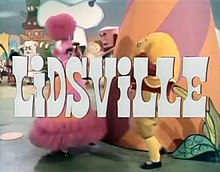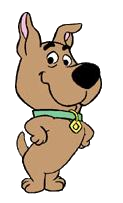
Scrappy-Doo is a fictional character in the Scooby-Doo franchise. He is a Great Dane puppy created by Hanna-Barbera Productions in 1979 and the nephew of Scooby-Doo in various incarnations of the Scooby-Doo cartoon series. Lennie Weinrib provided his voice for one season in 1979, and from 1980 on it was performed by Don Messick. In the first live-action theatrical film, video games, and commercials, he was voiced by Scott Innes, and portrayed by Rowan Atkinson when disguised as Mondavarious.
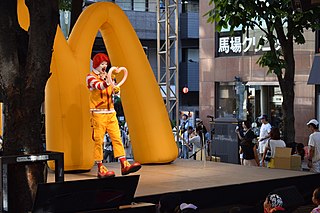
McDonaldland is a McDonald's media franchise and the fictional fantasy world inhabited by Ronald McDonald and his friends. Starting with the creation of Ronald McDonald in 1963, it is primarily developed and published by McDonald's. Initial attempts to expand the McDonaldland universe by marketing agency Needham, Harper & Steers were seemingly retconned due to legal issues, but ongoing aspects were expanded in McDonald's projects in collaboration with Data East, Virgin Interactive, Treasure, SEGA, and Klasky Csupo.
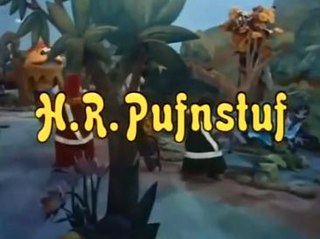
H.R. Pufnstuf is an American children's television series created by Sid and Marty Krofft. It was the first independent live-action, life-sized-puppet program, following on from their work with Hanna-Barbera's program The Banana Splits Adventure Hour. The seventeen episodes were originally broadcast Saturday from September 6, 1969, to December 27, 1969. The broadcasts were successful enough that NBC kept it on the schedule as reruns until September 4, 1971. The show was shot at Paramount Studios and its opening was shot at Big Bear Lake, California. Reruns of the show returned on ABC Saturday morning from September 2, 1972, to September 8, 1973, and on Sunday mornings in some markets from September 16, 1973, to September 8, 1974. It was syndicated by itself from September 1974 to June 1978 and in a package with six other Krofft series under the banner Krofft Superstars from 1978 to 1985. Reruns of the show were featured on TV Land in 1999 as part of its Super Retrovision Saturdaze Saturday morning-related overnight prime programming block and in the summer of 2004 as part of its TV Land Kitschen weekend late-night prime programming block, and it was later shown on MeTV from 2014 until 2016.
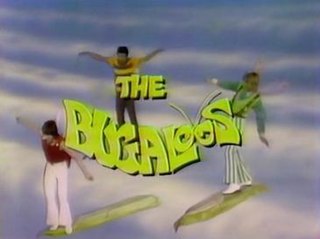
The Bugaloos is an American children's television series, produced by brothers Sid and Marty Krofft, that aired on NBC on Saturday mornings from 1970 to 1972. Reruns of the show aired in daily syndication from 1978 to 1985 as part of the "Krofft Superstars" package with six other Krofft series. The show features a musical group composed of four British teenagers in insect-themed outfits, constantly beset by the evil machinations of the talent-challenged Benita Bizarre, played by comedian Martha Raye.

Donald Earle Messick was an American voice actor, known for his performances in Hanna-Barbera cartoons.

Dynomutt, Dog Wonder is an American animated television series created by Joe Ruby and Ken Spears and produced by Hanna-Barbera Productions that aired on ABC from 1976 to 1977. The show centers on a Batman-esque superhero, the Blue Falcon, and his assistant, Dynomutt, a bumbling, yet effective robotic dog who can produce a seemingly infinite number of mechanical devices from his body. As with many other animated superheroes of the era, no origins for the characters are ever provided.

Sigmund and the Sea Monsters is an American children's television series that ran from September 8, 1973 to October 18, 1975, produced by Sid and Marty Krofft and aired on Saturday mornings. It was syndicated by itself from December 1975 to June 1978 and later as part of the Krofft Superstars show from 1978 to 1985.
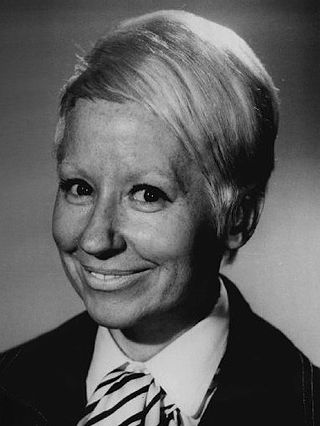
Billie Armstrong Brosch, known professionally as Billie Hayes, was an American television, film, and stage actress, best known for her comic portrayals of Witchiepoo and Li'l Abner's Mammy Yokum.

Partridge Family 2200 A.D. is an American science fiction Saturday-morning animated series and a spin-off of the 1970–1974 ABC live-action sitcom The Partridge Family produced by Hanna-Barbera Productions and Columbia Pictures Television and broadcast on CBS from September 7 to December 21, 1974, though, it would air in reruns until March 8, 1975. The band performed one of their pop hits in each episode.
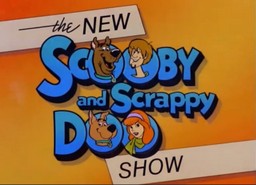
The New Scooby and Scrappy-Doo Show is an American animated television series produced by Hanna-Barbera Productions, and the sixth incarnation of the Scooby-Doo franchise. It premiered on September 10, 1983, featuring the return of Daphne, and ran for one season on ABC as a half-hour program made up of two eleven-minute short cartoons. For season two, Fred and Velma briefly return to the show after a four-year absence. The New Scooby-Doo Mysteries ran for another season on ABC.
Space Cats is a 1991–92 animated television series created by Paul Fusco, that aired on Saturday mornings on NBC. It is a comedy show about alien felines helping mankind.
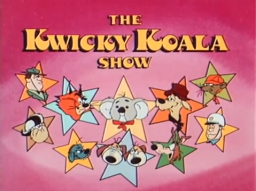
The Kwicky Koala Show is a 30-minute Saturday-morning cartoon produced by Hanna-Barbera Productions and Hanna Barbera Pty, Ltd. that aired on CBS from September 12 to December 26, 1981. The show is notable for being among cartoon director Tex Avery's final works; he died during production in 1980. As it was produced in Australia, the Cartoon Network and later Boomerang broadcasts were sourced from time-compressed PAL masters, rather than NTSC masters like many other Hanna-Barbera productions. Each segment has also been shown separately as filler between shows on Boomerang.

Leonard Weinrib was an American actor, comedian and writer. He is best known for playing the title role in the children's television show H.R. Pufnstuf, Grimace in McDonaldland commercials, the title role in Inch High, Private Eye, the original voice of Scrappy-Doo on Scooby-Doo and Scrappy-Doo, Hunk and Prince Lotor on Voltron, and Bigmouth on The Smurfs. He also was the voice for Timer in the "Time for Timer" ABC public service announcements in the early 1970s.
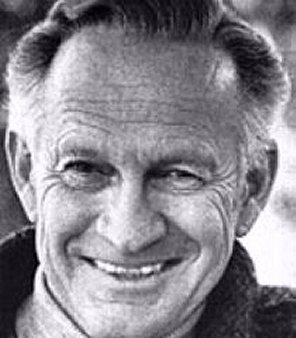
Walker Edmiston was an American actor and puppeteer.
Doctor Dolittle is a 1970–1971 Saturday morning animated series produced by DePatie–Freleng Enterprises in association with 20th Century Fox Television. The series is loosely based on the books by Hugh Lofting, as well as the 1967 film of the same title which center around Doctor Dolittle, an animal doctor who has the ability to talk to animals.

The Krofft Supershow is a Saturday morning children's variety show, produced by Sid and Marty Krofft. It aired for two seasons from September 11, 1976, to September 2, 1978, on ABC.

The Krofft Superstar Hour is a Saturday morning children's variety show, produced by Sid and Marty Krofft. After eight episodes, the show was renamed The Bay City Rollers Show. It aired for one season from September 9, 1978 to January 27, 1979 on NBC. NBC also ran other repeat Krofft shows in an unrelated umbrella titled slot, Krofft Superstars, from 1978 to 1985.
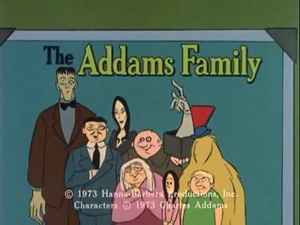
The Addams Family is an American animated sitcom adaptation of the Charles Addams single-panel comic for The New Yorker. The show was produced by Hanna-Barbera Productions for Saturday mornings in 1973, and was later rebroadcast the following season. Jackie Coogan and Ted Cassidy, who played Uncle Fester and Lurch, respectively, in the 1960s television series, returned in voice-over roles. The cast also included 10-year-old Jodie Foster, who performed the voice of Pugsley Addams. The show's theme music was completely different and had no lyrics or finger snapping, but retained a recognizable part of the four-note score from the live-action series.

CB Bears is an American animated television series produced by Hanna-Barbera Productions which aired on NBC from September 10 to December 3, 1977.

Pufnstuf is a 1970 American comedy fantasy musical film produced by Sid and Marty Krofft Enterprises and released by Universal Pictures. It is based on the children's television series H.R. Pufnstuf, a show that features a cast of puppets on a "living island."
